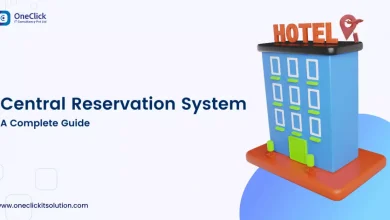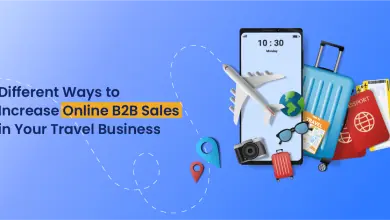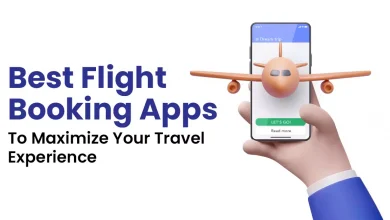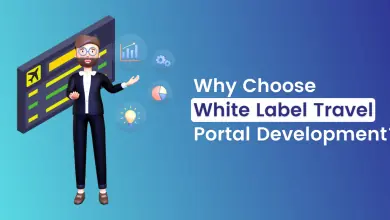Generative AI in Travel: Revolutionizing Tourism and Enhancing Customer Experience
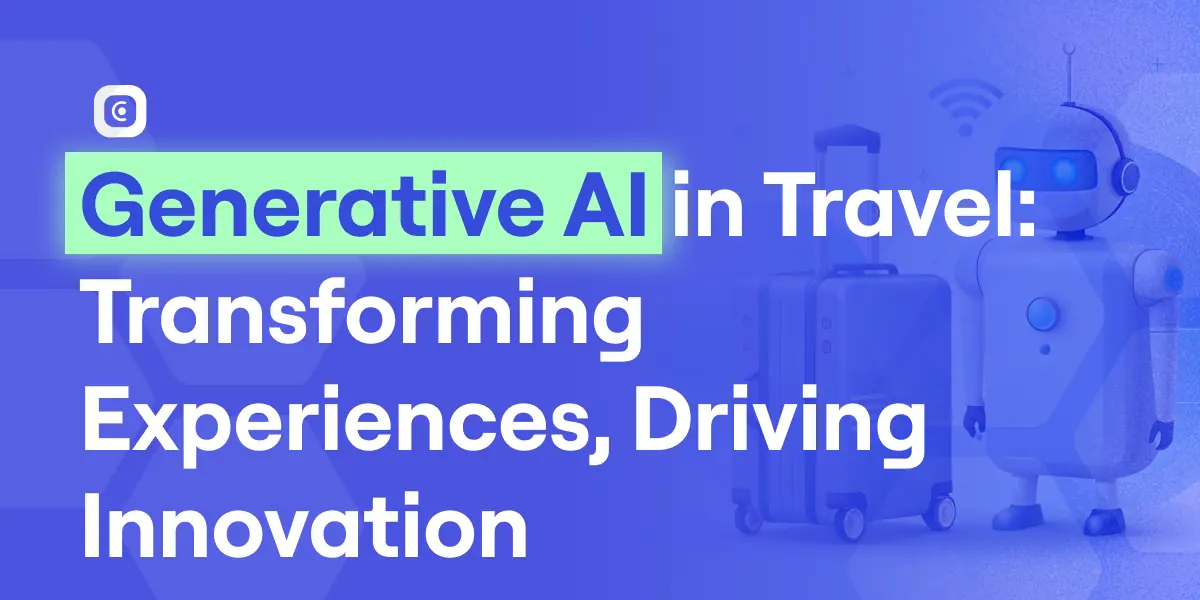
In today’s day and age, where Artificial Intelligence is taking over every domain, the travel industry is no exception. Imagine you’re planning your next trip and instead of 48 tabs open on the screen, there’s one AI assistant to guide you through the entire process. Generative AI in travel can suggest the best airlines, places to visit, activities to participate in, and restaurants to eat at.
AI travel itinerary generator is not only changing the way trips are planned and booked, but is also helping travel companies run smarter, leaner, and more creatively. In this blog, we unpack the many ways generative AI is transforming travel experiences, boosting business operations, and what that means for the future of tourism.
Why Generative AI is the Travel Industry’s Next Big Leap
Starting off, let’s first understand the role of generative AI in the travel industry and how it can enhance the overall user experience. Technology has played a crucial role in shaping the travel industry as customers have desired. Not too long ago, people had to go through a tedious process just to book a holiday, and that too with many inconveniences.
However, AI and ML have completely changed this practice, allowing customers to plan a trip to their favorite destination on their terms. This has been possible with the help of personal travel assistants provided by travel booking engines, and it has become people’s favorite ever since. A report from Statista suggests that 8 out of 10 travelers are using AI to plan their journeys for a more personalized and dynamic experience.
Generative AI in travel booking engines enriches the user experience by helping them navigate the complex world of travel information with real-time information. By leveraging AI, travel portals provide tailored recommendations according to the user’s preferences, budget, past bookings, and interests. It’s like a companion who understands your desire and guides you accordingly.
How Generative AI in Travel Planner Works
Now, there is no rocket science to using a travel AI generator. It’s as simple as requesting data from search engines or LLMs like ChatGPT or DeepSeek. Let’s have a quick breakdown in five simple steps:
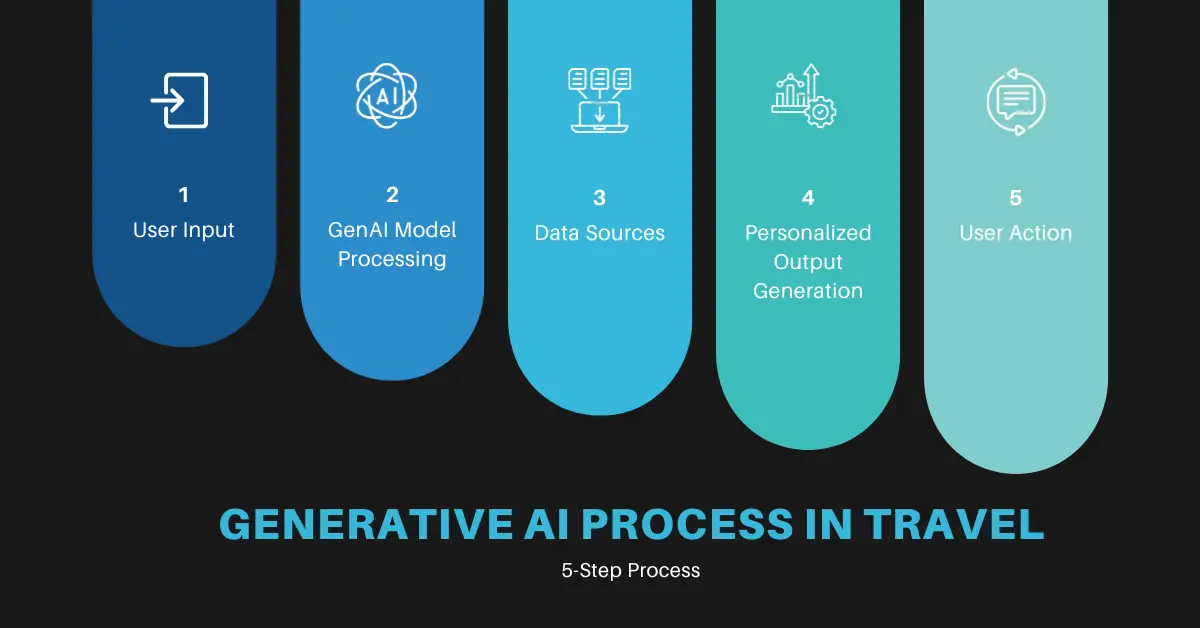
Step 1: User Input
The process starts when a customer makes a booking request and asks for assistance from the generative AI.
Step 2: GenAI Processing
GenAI now starts analyzing the past bookings, user behaviour, current data, and trends to provide the most suitable results that will match the customer intent.
Step 3: Data Sources
The data is mainly requested from CRMs, booking engines, weather APIs, maps, reviews, and even social trends.
Step 4: Personalized Output
AI travel generator will create an entire itinerary, including plans, suggestions, and best recommendations for the desired destination.
Step 5: User Action
And if the traveller likes what they see, they can proceed to book the journey as instructed. They can further refine their itinerary by sharing more information with the GenAI model.

12 Use Cases of Generative AI in Travel & Tourism
Now that we’ve discussed the workflow of generative AI in the travel industry, let’s go through the possible ways companies can utilize this technology to build a scalable solution.
1. AI-Powered Personalized Itineraries
Help your customers by saving hours of manual research with an AI travel itinerary generator. This technology can help travellers craft an outstanding travel experience by simply analyzing past travel behavior, preferences, and real-time data. Embrace the power of AI to help your customers like never before.
2. Real-Time Travel Updates & Re-Routing
Get rid of unwanted delays and hurdles by alerting your users beforehand using GenAI. This technology uses GPS trackers, traffic cameras, and mobile apps that provide real-time data to dynamically provide rerouting suggestions. Whether it’s sudden rain in Paris or a traffic jam in Rome, GenAI systems offer live travel suggestions, alternate routes, and real-time rebookings.
3. Virtual Travel Assistants & Chatbots (24/7 Support)
Unlike manual manpower, generative AI in travel is always available at your service without any unwanted delays. Your travel booking software will provide dedicated assistance to your users on demand. The provided suggestions via chatbots and virtual assistants are updated 24/7 in real-time.
4. Dynamic Pricing Optimization
Get real-time pricing updates regardless of the demand, trends, or booking patterns. This is one of the best features of generative AI for travel, allowing companies to provide a competitive price whenever possible. By continuously studying the customer booking patterns, companies can boost their revenue.
5. Language Translation & Localization
One of the biggest challenges for customers who travel to a different country can be addressed by travel generative AI. Your travel platform can be designed to provide instant translations and culturally adaptive content, helping users to explore their chosen destination without any hesitation.
6. Virtual Tours & Immersive Experiences
Many times, customers are skeptical of travelling to an unknown place and spend countless hours on research, remaining unsure. However, your travel solution can be designed to provide 3D tours or simulations of places before they make a booking. This can be one of the biggest highlights of your travel solution and can be an effective way to attract new customers.
7. Post-Trip Engagement
Travel service is not over until the customer decides. Simply put, your system should be designed so meticulously that it keeps a follow-up on the traveller’s journey via emails, feedback requests, and much more. This will help you to train your GenAI model and provide better rebooking deals or promotions.
8. Smart Shopping & Personalized Packing Lists
With AI, there’s no limit to personalization. If you’re limited by boundaries or budget constraints, choose a popular travel technology company that can help you optimize factors like training the AI model. This will allow you to provide exceptional services like destination-based suggestions on weather, activities, and essentials to carry.
9. Sustainable Travel Recommendations
Post-COVID, many travellers have decided to choose eco-friendly travel options to help sustain the environment. GenAI can help your customers with this cause by suggesting options like flights with a minimum carbon footprint and save nature. This helps your platform build trust and even attract a wide range of customers.
10. Risk Assessment & Travel Advisory
A Travel Risk Assessment (TRA) identifies potential hazards for travelers, while a Travel Advisory alerts individuals about specific risks in a destination. Both elements play a crucial role in ensuring a safe and informed travel experience for business or international travellers. With real-time safety updates and smart advice, you can enhance the travel experience.
11. Language Translation & Multilingual Support
One of the most important additions to make in your travel platform is to design for international customers. In the future, if you ever choose to scale your operations across borders, features like multilingual capacity will make it easy to target specific regions. Additionally, with multi-currency powered by GenAI, users can pay via any preferred mode with real-time conversions.
12. AI-Generated Travel Content
One particular factor that makes online visibility for businesses a lot trickier is high-quality content. But with various automation features provided by GenAI travel portals can create high-quality content and publish blogs, captions, and reviews on Google or social media very easily. This is a great way to put your services in front of a new audience.
How Generative AI Empowers Travel Agents and Mid-Sized OTAs
The growing competition is not easy for any industry of any size. In fact, it becomes more difficult for travel agents, mid-sized OTAs, and small businesses to survive. However, travel app development featuring a generative AI travel planner gives an edge to such players with outstanding capabilities that are normally missing from traditional operators. Here’s a quick differentiation for easy understanding.
| Feature/Function | Traditional OTA/Agency | GenAI-Powered OTA/Agency |
| Itinerary Creation | Manual & time-consuming | Instant, AI-generated & highly personalized |
| Customer Support | Human agents during business hours | 24/7 AI chatbots and multilingual |
| Content Creation | Manual blog/package updates | AI-generated dynamic content |
| Personalization | Limited to filters | Behavioral + contextual recommendations |
| Pricing Strategy | Static or rule-based | Dynamic and AI-optimized |
| Post-Trip Engagement | Generic emails | Tailored re-engagement campaigns |
| Cost to Operate | High (staff, overhead) | Leaner with automation |
| Scalability | Limited without more hiring | Scales easily with AI modules |
| Competitive Edge | Local market reach | Global reach with smart tech |

5 Best Practices for Implementing GenAI in Travel
The use cases of generative AI in the travel industry are pretty convincing and can help build a strong travel portal. However, GenAI is not enough on its own. It’s important to understand that it’s just a way to streamline operations and not a sure-shot way to overnight success. Below are a few practices that one should consider to scale their operations gradually.

1. Data Privacy & Compliance Measures
Customer privacy should remain your top concern for a travel booking solution. If your platform does not comply with industry regulations like CCPA, GDPR, PCI-DSS, etc, then it’s prone to data leaks and open access from fraudulent accounts. This not only puts customer data at risk but also affects your overall audience trust. As a result, ensure that your solution is encrypted with multiple firewalls at all times.
2. Bias-Free AI Design
Keep your solution transparent and easy for customers to interact with. By developing a portal that is user-friendly and equally serves all customers, you’ll have a better chance at success. What’s more, it also helps in building trust.
3. Performance Testing & A/B Iterations
Collect feedback on a regular basis to continuously evolve your system for the better. Let you customers tell you what they want so that you can provide a more refined and rich experience than your competitors.
4. User Control Over AI Decisions
Do not let AI take control over your customers’ booking journey. It’s just a tool that is designed to make things simpler. Travelers should be able to tweak their AI suggestions, not just accept them blindly.
5. Training AI with Diverse Travel Data Sets
Consider multiple regions, user types, and scenarios to test your travel platform regularly. This reduces the chances of an unexpected malware attack, server crash, or inaccurate results. Let your QA team play with the travel portal until all functionalities check out.
OneClick’s AI Expertise: Build Next-Gen Travel Experiences
Whether you want help with integrating an AI travel itinerary generator to your existing travel platform or simply developing a new one from scratch, OneClick has got you covered. Here’s a quick overview of our capabilities that make us the best travel technology company in the market.
- Custom Generative AI Models for Travel
- AI-Powered Itinerary Generation Engine
- Conversational AI & Multilingual Chatbots
- B2B & B2C Portal Integration
- Dynamic Pricing & Smart Deal Recommendations
- Globalization with AI Translation & Localization
- AI-Driven Post-Trip Engagement Tools
- Personalization-as-a-Service
- Privacy-First AI Implementation
- Modular, Scalable AI Architecture

Reimagining Travel with Generative AI
Generative AI isn’t replacing travel agents, it’s giving them superpowers. From personalized escapes to eco-friendly itineraries, the tech is here to make globetrotting smarter, smoother, and way more fun. So next time your customers plan a trip, let AI handle the logistics. Additionally, OneClick can help you indefinitely in your journey to make travel easier for customers.
FAQs
Generative AI creates new content or ideas (itineraries, emails), while predictive AI forecasts outcomes (price drops, weather changes).
Yes, with customizable and modular solutions like OneClick offers, even smaller businesses can implement GenAI features.
By performing regular audits, diverse data training, and transparent algorithms, companies can easily reduce AI bias effectively.
Yes, popular travel website development companies like OneClick offer plug-and-play modules for itinerary generation, chatbots, and more.
By analyzing preferences of all travelers, it creates optimal group itineraries, split payments, and personalized suggestions.


